“In the clear gold of an early autumn mornings, bugles heralding the dawn, Baroda’s Raj Mahal – Palace of the King – has an almost fairy tale aspect; the risen sun gliding its domes and towers, the tools of purple shadow, under its many arches; the whole elaborate facade mirrored in a circular tank, where swans black and white, sail among refections with their lordly air.”
– Maud Driver | 1942
Vadodara (or Baroda) happens to be Ekta’s hometown, a place she has great emotional attachment to. Though we visit the city quite often, we have not been ‘sightseeing’ much of late. Laxmi Vilas Palace happened to be on our ‘to-visit’ list for long, but some way or other we would end up not visiting it. This time we went with a decision to go see the palace at any cost.
As luck would have it, Mr. Prime Minister was in the city to inaugurate the new airport on the same day we were there. The VIP culture rampant in our country prompted the city administration to close most major arterial roads and place road blocks on others, resulting in massive traffic jams and chaos. So we had to navigate through many by-lanes before we finally reached Gate no. 3 of the palace, after which police would not let any vehicle pass through. So we got off the car and walked with the rest towards Gate no. 2 which is entrance of the palace and museum for general public. So much for democracy !
The Palace
Built upon an estate measuring 700 acres, the Laxmi Vilas Palace (or Lukshmi Vilas Palace) is an extravagant building by any standards and an overwhelming sight even for someone who has seen the mighty forts and palaces of Rajasthan. This fine symbol of the glory of the Maratha Gaekwads was commissioned by Maharaja Sayajirao Gaekwad III in 1880, and was completed 10 years later at the cost of £ 180,000.
The palace was designed initially by Major Charles Mant who also designed the palaces of Kolhapur and Darbhanga. It is said that Major Mant got convinced that the structure was not stable and killed himself out of guilt. However, the palace withstood the tests of time and stands tall to this date, proving (fortunately) its creator wrong. After the death of Major Mant, the design was completed by Robert Fellowes Chisholm.
This beautiful specimen of the Indo-Saracenic architecture happened to be the largest private residence built till date, four times the size of Buckingham Palace. Mant intended to ‘combine native detail with the ordinary requirements of a modern palace and arrangement of rooms’; while Chisholm recognised the transition that Indian royalty at that time was going through, making it necessary to create a design which would befit an Indian prince as much as it would an English gentleman.
Therefore, while the designer stuck to the original idea of Indian palaces, three sections – administrative building, king’s private quarters, and the ladies quarters; they made sure that it had all the modern amenities of those times, including a lift, modern plumbing and a telephone exchange; with the distinct orderliness of the west. Large halls, stately dining rooms, apartments for European guests, recreation rooms .. everything was added to this 20th century marvel, and the huge size of the building made sure that all this was incorporated without creating ‘stylistic havoc’.
The idea of ‘dry symmetry’ was rejected by the designers and the left and right wings of the palace are totally distinct from each other. While the exterior resembles the palaces of Jaipur in style, the interior is a mesmerizing mix of Rajput, Mughal and European styles, with hardly any semblance of Poona.
The Tour
The sun was beaming hard at about 2 PM when we entered the palace compound through Gate no. 2. After making an entry at the gate, we were asked to proceed and buy the tickets at the ticket counter. The tickets are steeply priced but considering that it is a privately owned property and it must be a costly affair to maintain it, the price is ok. The tickets are very beautiful, like postcards and they give an audio guide per ticket, with the choice of Hindi, English and Gujarati. The palace has been divided into 10 sections about which the visitors can get the information in a tastefully compiled audio. Photography is permitted only outside the building, something which breaks the hearts of anyone equipped with a heavy DSLR. We were aware about this beforehand so did not bother carrying a camera; as a result of which, all photographs in this post were taken using our cell phone.
The Sunken Garden and Peacock Urn
The first stop after starting was what is known as the Sunken Garden. This very pretty garden was landscaped by Sir William Goldring who also designed the famous Kew Botanical Gardens in London. The garden overlooks a massive gold course and is a great vantage point to capture panoramic shots of the palace. The peacock urn is made of marble and has two beautiful peacocks sitting on an equally elegant urn.
The sunken garden had a round pool of sorts which was probably filled with water, providing a reflection of the palace in it. There are two life-sized bronze sculptures by famous Italian artist Fellici Casorati. We were to see a lot of Fellici during our visit today.
Infant Moses being carried by his mother Miriyam, just like Krishna >>
Fellici and Peacocks
Back from the Sunken garden, we came to the Main porch and went to the Entrance Hall. The hall has beautiful marble pillars with 6 goddesses of learning – arithmetic, geometry, music etc carved on them. There are two marble bronze sculptures by Fellici, of a brahmin and a nobleman, and two marble busts of the queen mother and the king. There is a huge bronze urn kept in the centre, topped by two dragons. There are two centaurs sitting on the urn as well, apparently straining to restrain the dragons. Belgian chandelier and an ornate ceiling are a given.
Climbing a few steps, we reached the entrance hall. The pillars supporting the entrance are carved with reliefs of sun and cow, the sun being the main deity and cow being the symbol the Gaekwads get their name from. According to folklore, an ancestor once saved a cow (Gau) from getting slaughtered by tying it to his door (kivaad), thereby declaring that it was protected. Gau and kivaad thus became Gaekvaad…
There is an intricately carved and immensely beautiful staircase at the Entrance hall, carved by Fellici. Two more bronze statues, of a man and a soldier holding a musket guard the staircase. While we looked at a full-sized tiger, a glass dome complete with insignia of the erstwhile Baroda state loomed around a hundred feet above us. The staircase has a beautiful peacock made of mosaic, the kings of Baroda seemed very fond of peacocks, and windows decorated with stained glass. Incidentally, Laxmi Vilas Palace has the maximum amount of stained glass ever used at one place.
Guns and Daggers
From the Entrance Hall, we went to what is known as The Armoury. It has an impressive collection of swords, daggers, guns and other antique weapons, ranging from chakras to submachine guns of the WW era. I have always had a weakness for weapons and we spent a lot of time marvelling at the exhibits. The guide mentioned that these arms were not for ornamental purpose only, all of them have been used in battles at one point or another.
The most illustrious exhibits of the of the armoury are – a versatile weapon used by Guru Govind Singh; and the sword of his bête noire, Mughal Emperor Aurangazeb. Today both the weapon lay next to each other, unmindful of the bitter rivalry their owners had 2 centuries ago…
Witness of the Coronations
One of the most important places inside the palace, the Gaadi Hall or the Coronation Hall is so sacred that one has to take off the footwear before entering. This was the place where the Maharajas of Baroda from Fatehsingh Gaekwad were coronated. The gaddi (throne) is very simple, basically a cushion placed under a golden peacock umbrella and is said to signify the simplicity of the Gaekwads and the sombreness of the coronation ceremonies (each was preceded by a death in the family).
For any visitor, however, the biggest attraction of the Coronation hall are the majestic paintings made (and signed) by Raja Ravi Verma, the father of modern Indian art and the artist who gave vision to Hindu mythology. The most notable of these paintings, that of Goddess Saraswati and Lakshmi are part of our collective conscious now. Some other paintings like Kansa getting the Oracle’s warning and Keechaka Vadha (both from Mahabharata) are masterpieces in their own standing. Raja Ravi Verma stayed in Baroda for 14 years and created some of his best works under the patronage of the Maharaja.
The Darbar Hall
The Darbar Hall or the Royal Court is one room that dwarfs everything else inside the palace, including the conscious of the visitor. It is a rectangular room with very high ceiling from which many Belgian chandeliers are hung.On the walls are busts of the kings and princes of the erstwhile state, including one of the biological father of Sayajirao III. The hall has no pillar supporting the ceiling and its a wonder how the structure supports itself. The upper part of the walls are dotted with intricately carved balconies made of rose and sandal wood. The windows are decorated with stained glass, depicting scenes from Hindu mythology, letting the rays of the eastern sun filter to the floor. In the words of the king himself, “There is perhaps no finer room in India.”
As we walked in the hall, we noticed that the floor was inlaid with beautiful mosaic of semi precious stones, showing the insignia of the Gaekwads. The artwork is so beautiful and seemingly fragile that I wish they forbade people from walking in with shoes on.
The Mighty Tower and Fountains
The Laxmi Vilas Palace boasts of a 300 feet tall tower which is visible from a great distance, and together with the dome of the palace, forms its most recognisable feature. It was originally meant to function as a clock tower; however the designers felt that the constant ticking of the clock would annoy the residents, changed the plan to keep a beacon at the top which would signify when the king was present in the palace. The tower is part Moorish – part Rajput in appearance and makes an impressive sight.
There is a beautiful fountain fashioned in European style, next to the Darbar Hall. This series of fountains are flanked by white marble statues which seem to come straight from Greek mythology. On an unusually hot October afternoon, this was an oasis of comfort there. There was a small cafetaria by the side and we spent some time sipping drinks and cooling ourselves down before heading back.
Epilogue
The Gaekwads of Baroda were fine rulers; most notable among them being Sayajirao Gaekwad III, the creator of this palace. He brought in many reforms including the idea of compulsory primary education, ban on child marriages and his efforts again untouchability. Being an ardent admirer of knowledge, he gave patronage to renowned artists and writers of the era and was instrumental in establishing Baroda as the “Cultural centre of Gujarat”. The majestic MS Universities and various other industries find their origins in the efforts of this great king. There were very few other kings as progressive as him, most others too indulged in hedonistic pleasures.
The Laxmi Vilas Palace is a standing testimony of the grandeur of the Baroda state, a beautiful amalgamation of the leading architectural styles of the world. If you happen to visit Vadodara, please make an effort to visit it.

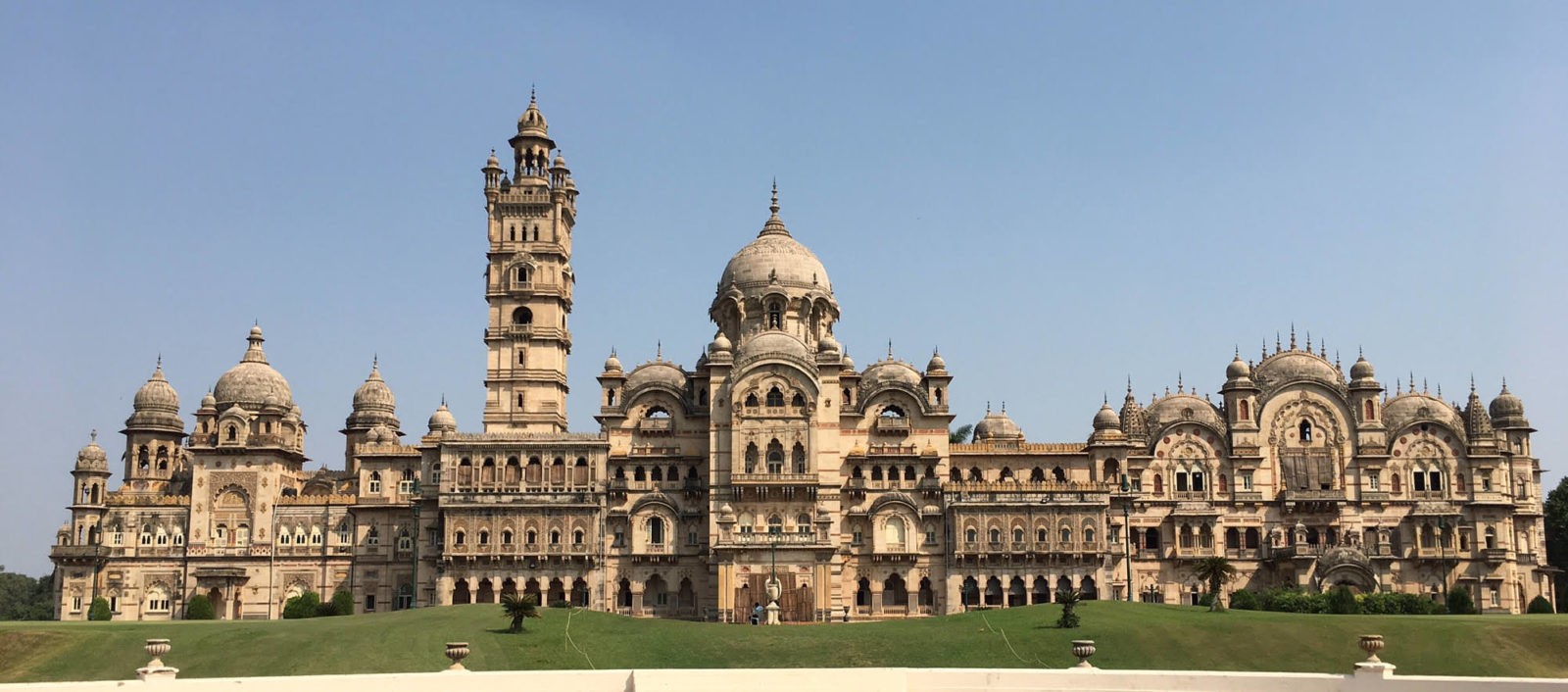
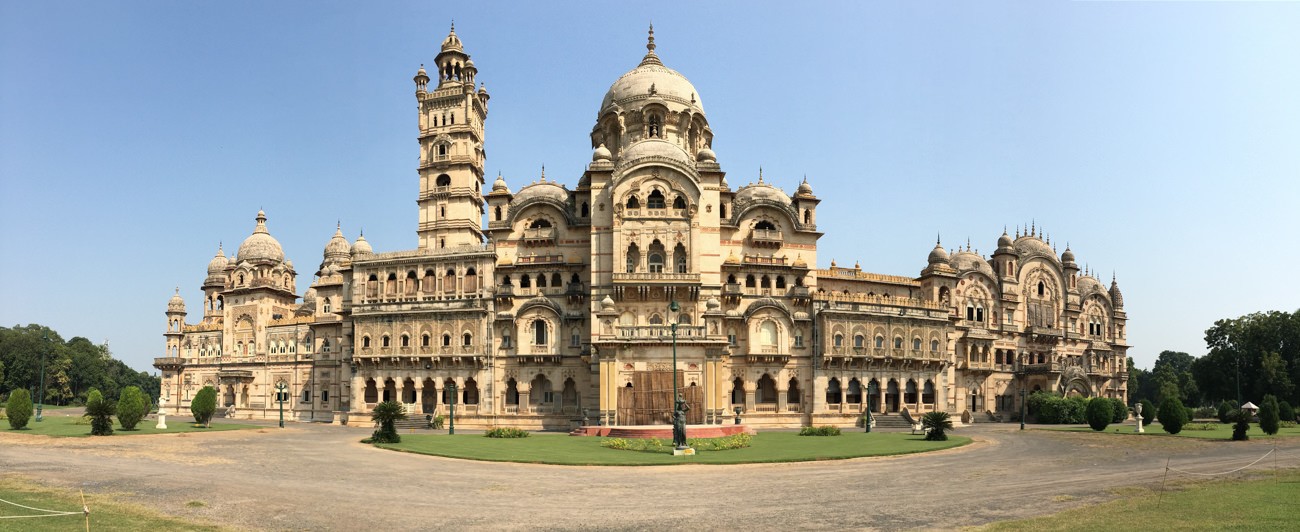
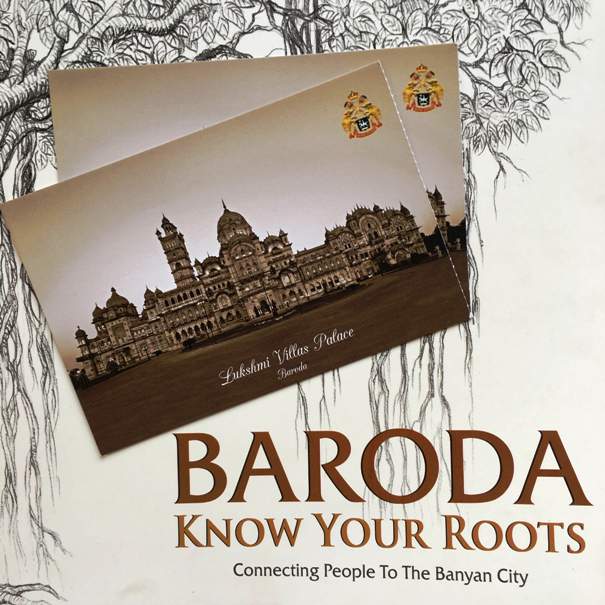
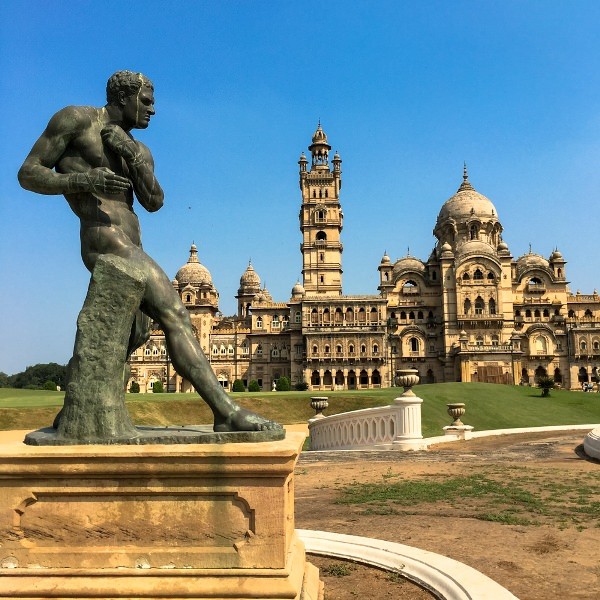
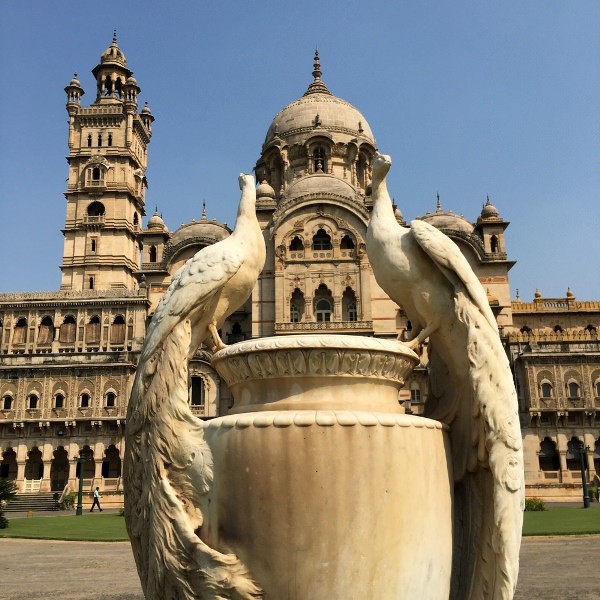
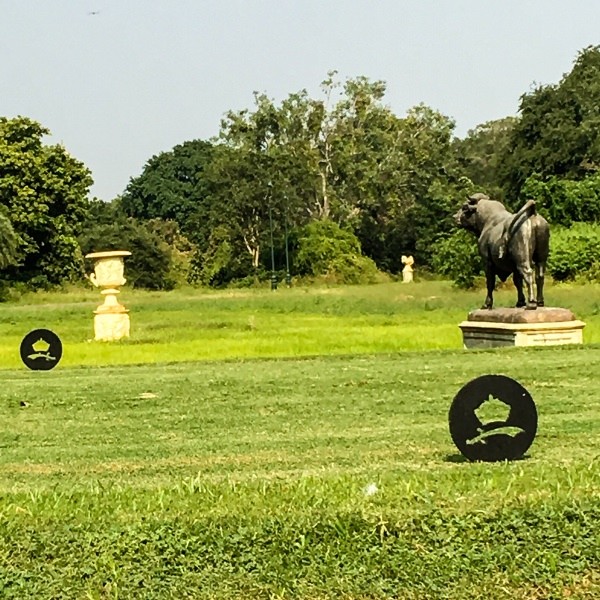
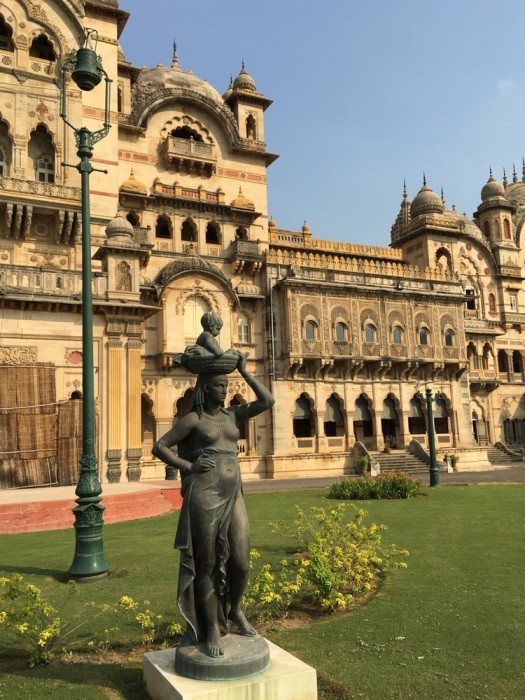
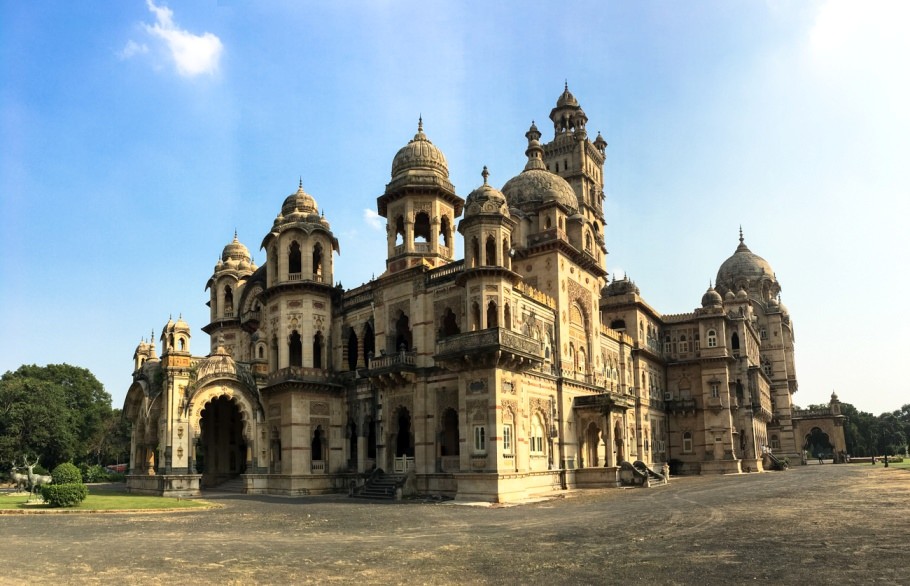
Cancelled my trip to Baroda last weekend! Have to, have to go! Gorgeous palace – looks so amazing in photos, must be even better in real life. The amazing thing is I don’t think too many people even know about this palace unlike the Mysore Palace.
Aww that’s bad. Whenver you go, please visit the palace. The reason why most people do not know about it is because it was not open for public for a very long time and tickets are on a pricier side.
Thanks for the nice tour of the palace. Any interior photos?
Nope. Photography is not allowed inside the palace.
Beautiful hidden gem!
It indeed is. Thanks for visiting our blog 🙂
Beautiful pictures Puru 🙂 and the post is packed with interesting information:) Britishers Left some good things behind… Can’t imagine the guy died out of guilt…
Thank you. Back in those day, maybe they had very high standards of honour 🙂
Very informative post with beautiful pics.
Thank you
Very nice place.
Enjoyed reading.
Thank you 🙂
Beautiful photographs and a very informative post, I will definitely visit Baroda now ! 🙂
Thank you 🙂 Baroda is a nice city, whenever you go there, do visit Champaner as well 🙂